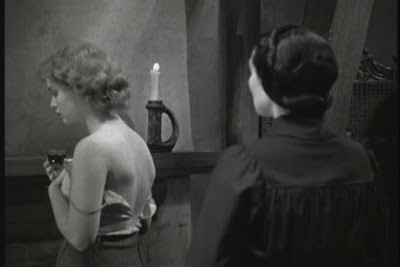Happy new year. Let's ring it in with The Corpse Grinders. My last run-in with the impressively mustachioed b-movie director Ted V. Mikels was 1973's marvelously titled Blood Orgy of the She-Devils. Unfortunately, that title promised way more than it delivered, and the film was extremely light on blood, orgies, and she-devils, though its highlights included one of the wildest ensembles ever worn to a picnic (the penultimate pic in my 2018 review). The Corpse Grinders is a much more honest title. This film delivers on the corpse grinding, my friends.
With a screenplay cowritten by Joe Cranston, working actor (mostly in TV and theater) and the father of Bryan Cranston (seriously!), and fellow b-movie legend Arch Hall Sr., the writer/director/producer of 1962's Eegah! (tagline: "the crazed love of a prehistoric giant for a ravishing teen-age girl!"), starring Arch Hall Jr. and future Bond villain Richard Kiel, The Corpse Grinders is nutty as hell. The movie's bonkers premise is not even remotely plausible, but Mikels carries on anyway with much enthusiasm, which is how it should be.
What is that insane premise? The Lotus Cat Food Company, an independent factory producing high-end cat food (the factory consists of a tiny office and one industrial grinder in the basement; besides the two owners, the staff consists of a bug-eyed elderly alcoholic and a one-legged deaf-mute woman who one of the owners converses with in sign language that does not resemble any known sign language on planet Earth), runs into some money trouble when their wealthy investor mysteriously "disappears." The owners, Landau (Sanford Mitchell, who eerily resembles David Geffen) and Maltby (J. Byron Foster), decide to cut costs by grinding up corpses and turning the ground-up corpse meat into cat food. What could go wrong?
The corpses are stolen from the cemetery by an ill-tempered man named Caleb (Warren Ball), who is fueled in his work by beef jerky delivered to him by his insane wife Cleo (Ann Noble). Cleo carries around a doll she believes is a real child and is constantly making terrible-looking soup. Landau promises to pay Caleb later, but he keeps delaying payment. Note to self: don't rob graves without receiving the cash first.
The corpse grinding initially pays off. Cats love the taste of human meat, and the company is making bank. (I really don't understand how this factory makes money considering that their setup allows for maybe thirty cans of cat food production a week, tops, but we are not here to ask questions of The Corpse Grinders. The Corpse Grinders asks questions of us.)
Unfortunately, once cats taste people-flesh, they crave it forever. If they're hungry and no can of Lotus Cat Food is nearby, they attack humans. This gets the attention of surgeon Dr. Howard Glass (Sean Kenney), who is attacked by the cat of his nurse and girlfriend Angie Robinson (Monika Kelly), who strangely keeps her cat at the hospital. Does the health department know about this? Howard and Angie begin to suspect that Lotus Cat Food is full of human meat and start to snoop around the factory, sometimes during their hospital shifts. What the hell is going on at that hospital? Meanwhile, a mysterious man with a mustache spies on everyone.
While the doctor and the nurse conduct their covert investigation, cats keep attacking their owners, including the secretary at the food adulteration registry, who leaves work early to turn on a soap opera, strip down to her underwear, and chug a beer. This is my kind of woman. Sadly, she feeds her Siamese cat Lotus Cat Food. I hope she pulls through.
This is a low, low, low budget movie with only a handful of locations, but it has a charming weirdness, and every actor in it has an interesting face. Cassavetes regular Vincent Barbi even shows up. It's compelling and kooky in all the ways Blood Orgy of the She-Devils wasn't. Mikels claimed The Corpse Grinders was the most memorable movie the Boomer generation ever saw (is The Corpse Grinders to blame for melting Boomers' brains?). He also said Corpse Grinders was the only profitable movie he ever directed. I don't judge a movie by its financial success or failure, but I'm happy that something as weird and goofy as this thing made some bank.






















































